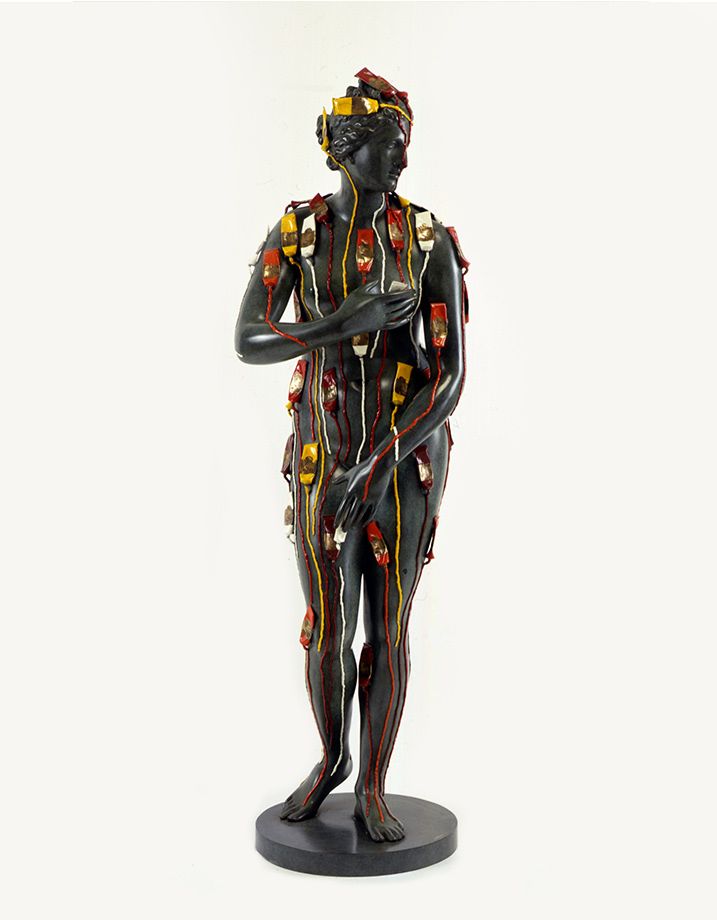Selected Works

Arman
L'ennemi intérieur
Bronze patiné
210 cm de hauteur
signé et numéroté à 4 exemplaires + 1 EA

Arman
Violoncillitch
Bronze patiné
210 cm de hauteur
Signé et numéroté d'une édition à 4 exemplaires + 1EA

Arman
Vénus aux coulées de peinture, vers 1990
Bronze soudé, patiné et polychromé à la laque
162 x 55 x 55 cm
Signé et numéroté d'une édition à 4 exemplaires
Fondeur Bocquel
Some of the works depicted are no longer available.
Biography
By transforming everyday objects into bronze, Arman creates sculptures in the tradition of New Realism, which advocates a "new way of perceiving reality" and a "poetic recycling of urban, industrial and advertising reality". As co-founder and emblematic figure of the movement, he contributes to its promotion through accumulations of objects, to which he gives a monumental scale, with works of almost 5 meters in height.
Also influenced by the works of Kurt Schwitters and Jackson Pollock, he tried his hand at stamp work and exhibited the first "cachets" in Paris in 1956. During an exhibition at Iris Clert, "Armand" lost his "D" in the invitation and authenticated the printing error by transforming his signature. While he accumulated works and exhibitions, Arman was now fully engaged in the intellectual and artistic movement of the 60s.
His encounters led him to frequent the New York artistic community, in contact with Marcel Duchamp. This was the beginning of a life continually shared between France and the United States.
Public Collections
Artsonje Museum, Gyeongju Bomun; Berardo Museum, Lisbonne; Carré d'art - musée d'Art contemporain de Nîmes; FLUXUS+, Potsdam; Fondation Cartier pour l'art contemporain, Paris; Fondation Pierre Gianadda, Martigny; Hamburger Kunsthalle, Hambourg.

